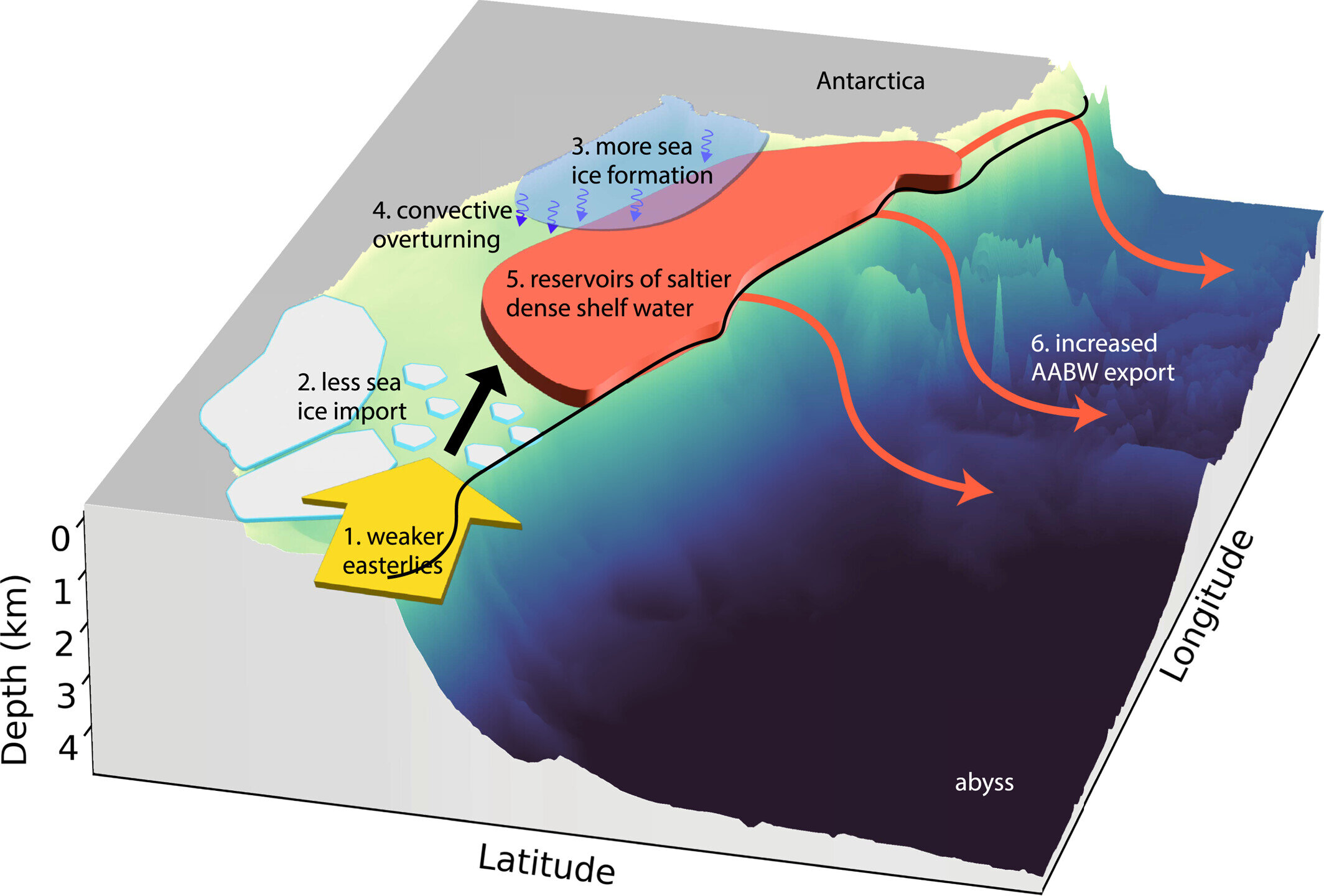Earth’s oceans are a complex system, and their interconnected nature has global implications. Around Antarctica, cold and dense waters form in the depths of the Southern Ocean. This is known as Antarctic Bottom Water (AABW). It comprises most of the deepest abyssal part of the ocean and approximately a third of the volume of the planet’s marine environments. AABW has an important function in global circulation and the overturning patterns of the ocean, distributing heat, salt, carbon and nutrients northward into basins across the planet.
However, in recent decades AABW has become warmer, less saline and has declined in volume. This has consequences for ocean temperatures, ventilation and nutrient distribution to the surface, affecting marine ecosystems and the diverse organisms they support. It also affects the global climate and sea level rise, which impacts coastal communities.
AABW forms as a consequence of cold polar winds bringing sea ice into the region, the formation of which expels salt into the ocean (sea ice has a salinity of approximately 5%, compared to 34.5% of the surrounding sea water). This salt concentrates in the ocean, making the sea water denser so that it sinks, drawing warmer and more buoyant offshore sea water to the area in a continuous cycle known as thermohaline circulation.
Researchers at the University of New South Wales, Australia, simulated the formation and migration of AABW over a 60-year period from four regions around Antarctica (the Weddell and Ross Seas, Prydz Bay and the Adélie Coast) based upon ocean-sea ice models. These models, reported in the Journal of Geophysical Research: Oceans, consider how changes in sea ice transport, melting of land-based ice and coastal winds impact AABW.
AABW reservoir export from the Weddell and Ross Seas can last up to two years, while for Prydz Bay and the Adélie Coast it is less than a year. The former scenario was found to have strong impacts on ocean circulation for up to a decade thereafter, while the latter results from the narrower East Antarctic shelf causing rapid export of Deep Sea Water (DSW) that prevents accumulation at depth.
2023-06-29 03:30:04
Post from phys.org
